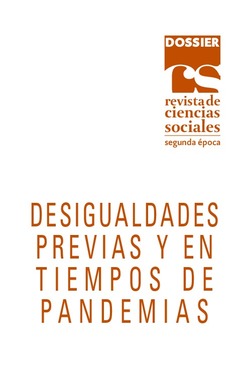¿Apogeo y ocaso del modelo extractivista urbano en la Argentina? (2015-2019)
The rise and fall of the urban extractive model in Argentina? (2015-2019)

Ver/
Fecha
2021-09Autor
Fidel, Carlos; Farías, Cristina; Di Tomaso, RaúlResumen
Este trabajo tiene como objetivo describir y reflexionar acerca de los rasgos de la política habitacional en la Argentina en el período 2016-2019. En este período se realizó un giro en la política económico-social gubernamental, encauzándola hacia un recorrido neoliberal atravesado por la “bicicleta financiera” que propició la salida de capitales líquidos, sostenida en la ampliación de la deuda externa y los nuevos acuerdos con el FMI. En ese contexto donde se privilegió el accionar de la esfera financiera, se impulsaron formas extractivistas de financiamiento para la adquisición de viviendas.
Nuestra hipótesis es que fue una política habitacional que retomó los peores rasgos y prácticas aplicadas en otros países para absorber ahorros de las capas más bajas de la población de la manera más rápida posible, ofreciendo la posibilidad de acceder a la propiedad y mejora de las condiciones
habitacionales. La política habitacional aplicada contribuyó a ensanchar las asimetrías sociales y económicas que existen en las urbes. Una de las principales razones es que su esquema de política no ha creado mecanismos de regulación del uso y precio del suelo urbano. Mientras se dejaba liberado al funcionamiento del mercado inmobiliario la fijación del precio del mercado del suelo y el marco construido, se sumó una política de financiamiento destinada a un amplio segmento de la población urbana que buscaba tener vivienda propia y/o ampliar el espacio que habitaba. Al final del mandato de Cambiemos, quedó un importante grupo de población afectado por las políticas aplicadas, con deudas hipotecarias impagables. The goal of this paper is to ponder about and describe the features of habitational politics in Argentina between the years 2016 and 2019. In this period, the government economical-social politics took a turn to ride the neoliberal route crossed by the carry trade, which led to liquid capital flight and was sustained by external debt enlargement and new agreements with the International Monetary Fund. In this context where the acts of the financial sphere were privileged, extractivist ways of financing
acquisition of housing were promoted. Our hypothesis is that this habitational politics picked up the worst features and practices previously applied in other countries to absorb the savings of the lowest social layers in the quickest way possible by offering the possibility to acquire a property and improve habitational conditions. The applied habitational politics contributed to enlarge the economical and social asymmetries that exist in the cities. Their politic scheme not creating mechanisms to regulate urban land use and price is one of the main reasons. While the setting of the market price of the land and the built framework were left in the real estate market’s hands, a funding policy was launched, aimed at a broad segment of the urban population that sought to own a house and/or expand the space they inhabited. At the end of “Cambiemos” period, a significant amount of people was affected with unaffordable mortgage debts because of the applied politics.
